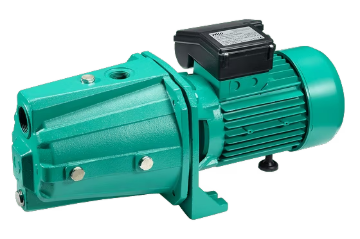Products tagged with 'water pump'
CONTROL BOX - CB -30125
CBC-30125
POWER HP 3.0 PHASE 1 to control the various mechanical functions of industrial equipment or machinery
₱12,500.00
CONTROL BOX - CBC-50125
CBC-50125
POWER 5.0 PHASE 1 to control the various mechanical functions of industrial equipment or machinery.
₱18,125.00
INITIAL JET 3-4
INITIAL JET 3-4
SHALLOW WELL JET PUMP MATERIAL : CAST IRON HP : 0.75 VOLTAGE : 220V - 60HZ RPM 3450
₱11,500.00
JET WJ SERIES - WJ-201-X-EM/6
WJ-201-X-EM/6
WILO JET WJ SERIES - WJ-201-X-EM/6 MATERIAL STAINLESS STEEL HP 0.50 VOLTAGE 220 V - 60HZ RPM 3450
₱17,500.00 ₱10,875.00
JET WJ SERIES - WJ-203-X-EM/6/B
WJ-203-X-EM/6/B
WILO JET WJ SERIES - WJ-203-X-EM/6/B STAINLESS STEEL 1.0 HP VOLATGE 220 V - 60HZ RPM 3450
₱12,000.00
DEEP WELL JET PUMP-2STG(NO ADAPTER) - DWP 1.5
DWP 1.5
DEEP WELL JET PUMP-2STG(NO ADAPTER) - DWP 1.5 MATERIAL : CAST IRON HP 1.5 VOLTAGE 220V - 60HZ RPM 3450
₱30,000.00 ₱2,400.00
DEEP WELL JET PUMP-2STG(NO ADAPTER) - DWP 2.0
DWP 2.0
WILO DEEP WELL JET PUMP-2STG(NO ADAPTER) - DWP 2.0 CAST IRON HP 2.0 VOLTAGE : 220 V - 60HZ RPM 3450
₱31,875.00 ₱25,500.00
SUBMERSIBLE WASTE WATER PUMP
EA-30, EA-75T
SUBMERSIBLE WASTE WATER PUMP MODELS EA-30 & EA-75T EA-1~7.5 HP EA1/3 ~ 1/2 HP
₱69,700.00 From ₱40,801.00
WILO SIMPLEX INVERTER BOOSTER SYSTEM MHIKE SERIES
MHIKE-205,404,405-A
Wilo Simplex Inverter Booster Pump System MHIKE Series MODELS MHIKE 205-A MHIKE 404-A MHIKE 405-A
From ₱103,501.00




























